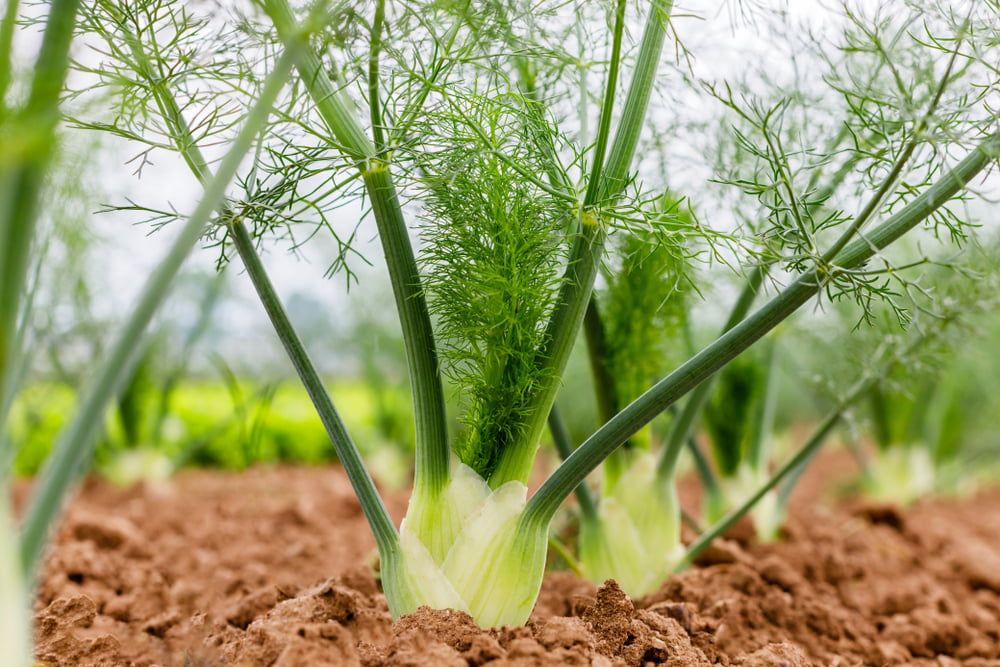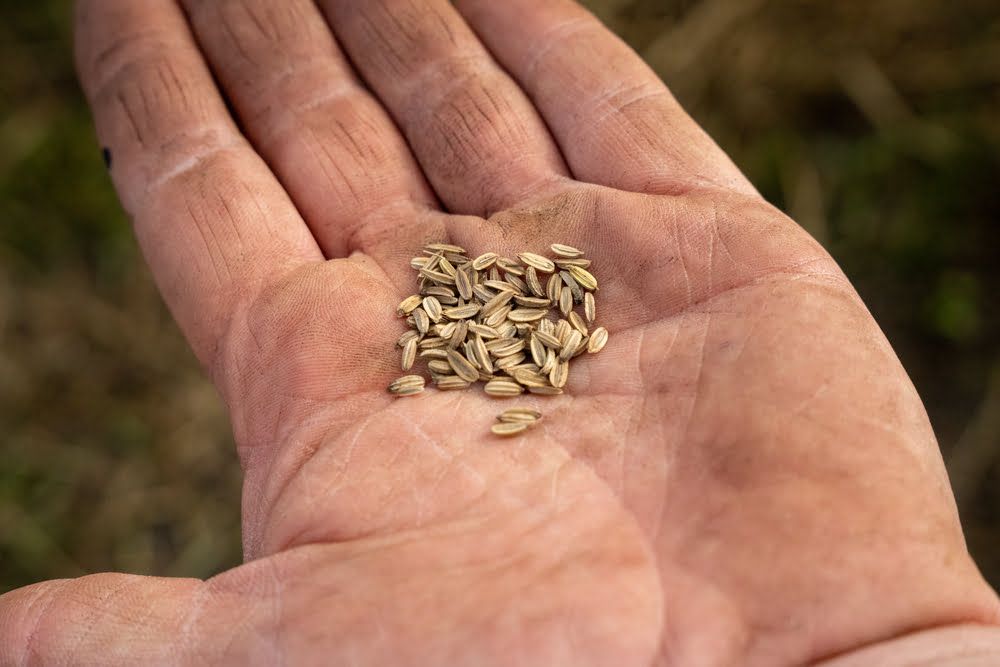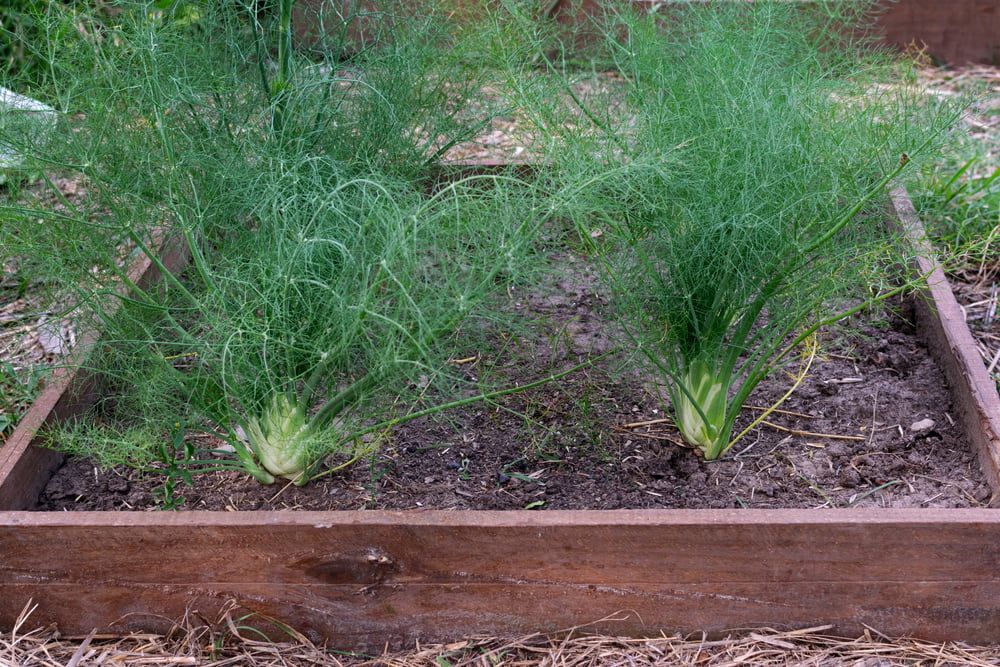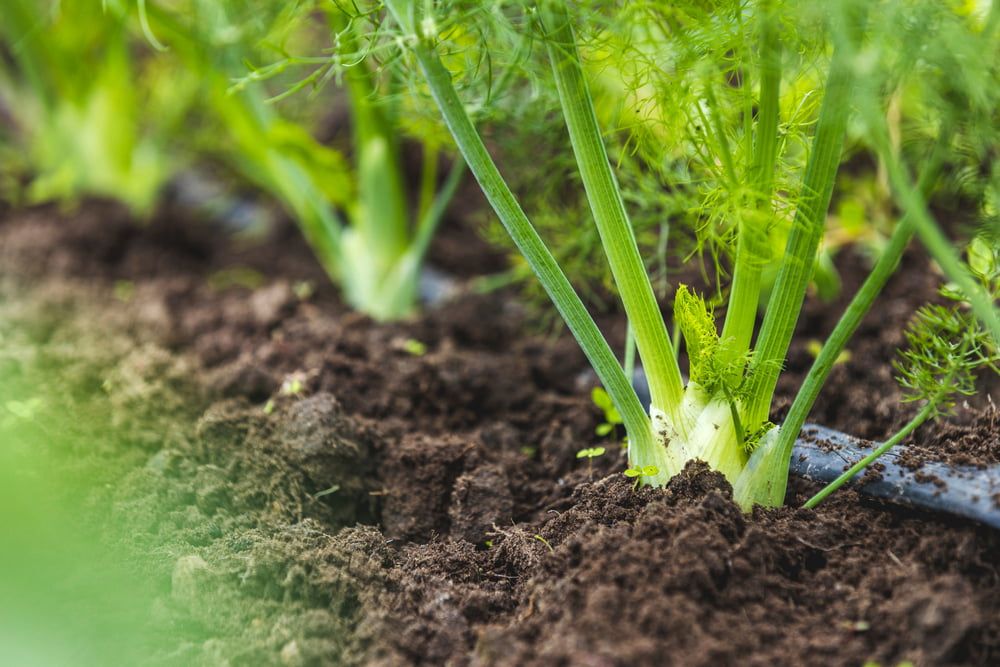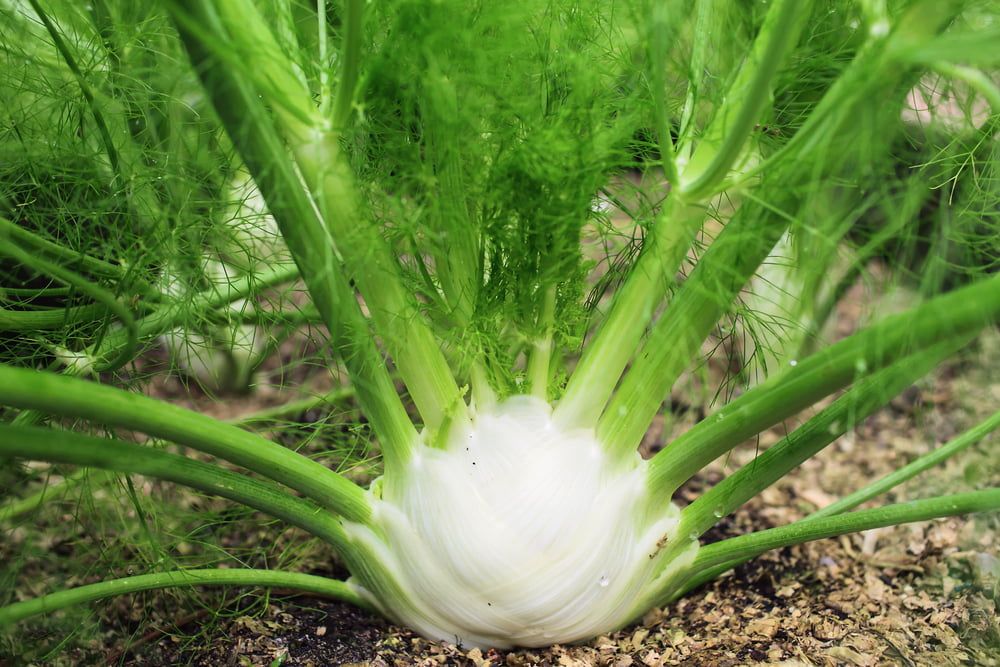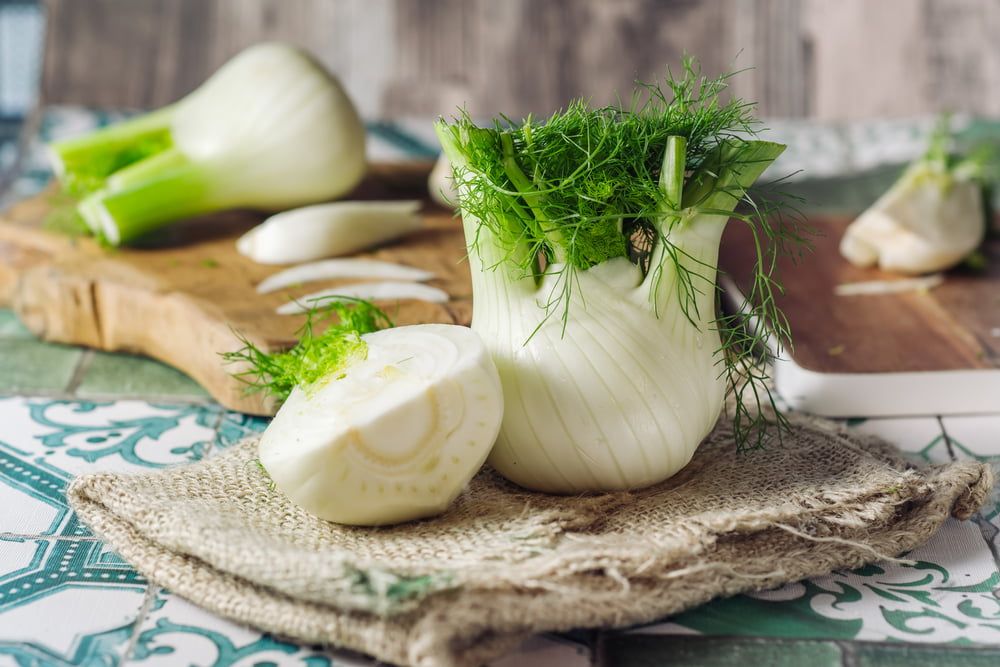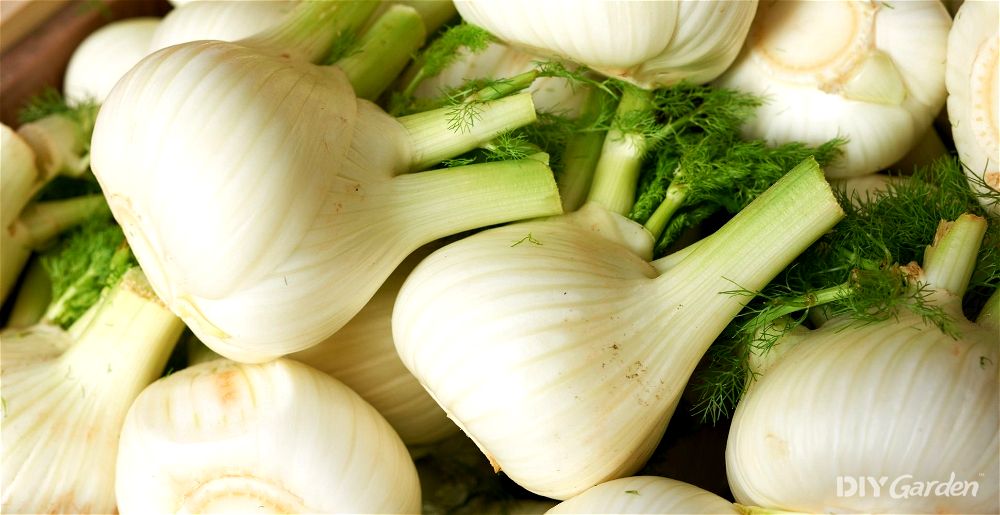
Not to be confused with common fennel, which is grown for its leaves as a culinary herb, Florence fennel is all about the bulb. Subtly sweet with a delicate liquorice flavour and a crisp, juicy texture, this vegetable not only tastes delicious, but those intricately ornamental plants also happen to be very easy to grow.
Growing Florence Fennel: A Quick Snapshot
When to Sow – Apr-Jul
When to Plant – Apr-Jul
When to Harvest – Jun-Nov
Average Yield per Plant – 600g
Spacing – 30cm
Depth – 1.5cm
How to Grow Florence Fennel at Home
A short-lived perennial that’s usually grown as an annual, Florence fennel is a cool-weather crop that happily tolerates the first few frosts of the autumn. This gives you a substantial harvest when most of your summer vegetables are dying back for the year. Even better, Florence fennel doesn’t require much attention once planted, so long as you can meet its basic growing requirements.
Growing Requirements for Florence Fennel
Florence fennel needs plenty of direct sun. The more light you give your plants, the bigger their bulbs will grow and the sweeter they’ll taste.
A rich, fertile, but light soil is best for growing Florence fennel. A mix that’s well-draining with plenty of compost or well-rotted animal manure mixed through would be ideal. Adding some sand to heavy soil can also help with drainage.
How to Grow Florence Fennel from Seed
Florence fennel needs about 3-4 frost-free months in order to properly grow. However, don’t make the mistake of sowing your seeds too early. Unlike many other vegetable plants, Florence fennel is extremely sensitive to day length/hours of light. It needs plenty of this, which is why experienced gardeners would recommend sowing fennel seeds in mid-summer.
At the start of the season, Florence fennel is best sown indoors. However, once the soil outside warms up, you can direct sow your seeds, which is always a good time-saver.
For regular harvests, sow your fennel seeds successionally. The bulbs taste best when they’re relatively small, meaning that sowing some seeds every couple of weeks from late spring to mid-summer will give you a significantly longer harvesting period.
How to Sow Florence Fennel Seeds in Module Trays:
- Fill module trays with a multipurpose compost
- Water the trays well, making sure that excess water is draining out from the bottom. Remember that Florence fennel needs well-draining soil
- Make a small indentation in the centre of each module, about 1.5cm deep
- Place 1-2 seeds into each indentation and then cover back over with compost. If you’ve opted to go for two, which gives you insurance in case one doesn’t germinate, you’ll need to thin out the weaker seedling once they’ve both sprouted
- Water your trays lightly again and then place them somewhere warm. Try to keep them at a consistent 17°C for optimum germination
It will take about 7-10 days for your fennel seeds to germinate. Once they do, move them to an area that receives plenty of light. Keep the seedlings well-watered (but not soggy!) until they’re ready to be planted out.
How to Direct Sow Florence Fennel Seeds:
- Create small furrows in your soil that are about 1.5cm deep. Space each row 30cm apart
- Sow your fennel seeds thinly and then cover them back over with soil
- Water lightly after sowing if your soil was dry
Once your seeds germinate, give them a couple of weeks to grow before thinning them out, so that there’s 30cm of space between each seedling.
How to Plant Florence Fennel Outside
Since Florence fennel hates root disturbance, plant your indoor-sown seedlings out as soon as their roots have started to fill their modules – there’s no need to transplant them into a larger pot first, unless the weather that spring/summer is particularly cold.
However, you’ll still need to harden them off for a week or so before planting, to help them acclimatise to the outdoor elements.
Once they’re ready, thoroughly weed your growing area and then dig holes that are just slightly larger than the size of each module, spacing each one 30cm apart. Gently remove the seedlings from their modules. Try to keep the rootball and the soil around it as intact as possible to minimise disturbing the roots.
Place your seedlings into their new homes and then cover their roots over with soil. Water well after planting.
How to Plant Florence Fennel in a Greenhouse
Florence fennel grows well in a greenhouse, so long as it has a deep enough growing area for its long taproot to fully stretch out. When growing in a greenhouse, you’ll be able to start your seeds off earlier in the year, and harvest your bulbs later into the winter.
Since a greenhouse offers extra warmth and protection, sow your Florence fennel seeds directly into your greenhouse beds using the same methods as when direct sowing fennel outside.
If you don’t have enough space in your greenhouse beds, consider growing your Florence fennel in pots instead. This works well, so long as your pots are at least 30cm in depth. You’ll need to also leave about 7-10cm of space between the surface of the soil and the rim of the pot. This gives you enough room to earth your bulbs up as they grow and swell (more on this later on!).
How to Care for Florence Fennel
Florence fennel is an easy vegetable to care for. You could plant them and then forget about them, returning a few months later to harvest your bulbs. However, for the sweetest, whitest, and tastiest bulbs, a little extra attention always helps:
Watering Florence Fennel
Just like many other Mediterranean plants, Florence fennel prefers to be kept slightly dry. That being said, never allow the soil to fully dry out. It should be kept evenly moist, but not too wet.
Consistent moisture is key for fennel. Irregular watering will stress your plants out, causing them to bolt sooner in the season.
Feeding Florence Fennel
Although a fertiliser isn’t essential, using one does help to give Florence fennel plants a boost in growth. Wait until your plants are established in the ground before feeding them, and then apply a high-potassium fertiliser every 2-4 weeks, depending on how rich your soil already is.
Earthing Up Florence Fennel
The bulb that Florence fennel produces isn’t technically a bulb – it’s actually just the base of the stem swelling up and taking on a bulbous shape. This is why the “bulbs” form near the surface of the soil, rather than deeper underground.
In order to keep those bulbs as white as possible, which gives them a superior taste, you’ll need to earth them up. This is done in the same way that you would earth up potatoes – simply cover the bulbs over with more soil as they swell. Start doing this once the bulbs are about the size of an egg, and then continue keeping them covered until you harvest them. Not only will this keep the bulbs white and tender, but it’ll also give the plants more stability in strong winds.
Weeding and Mulching Florence Fennel
It’s important to keep the soil around your fennel as weed-free as possible. However, you do also need to be very careful when weeding – you don’t want to accidentally disturb any fennel roots or bulbs.
One good way to cut back on your time spent weeding is to mulch your fennel plants soon after planting them out. Use an organic mulch that will slowly break down and feed the soil as it does so. Keep in mind that even if you mulch your fennel plants at the beginning of the growing season, you’ll still need to earth them up as the bulbs push themselves upwards.
How to Harvest Florence Fennel
Once your Florence fennel bulbs are about the size of a tennis ball, they’re ready to be harvested. While they’ll tolerate autumn frosts just fine, smaller bulbs that have been freshly harvested taste the best.
To harvest a fennel bulb, use a sharp knife to cut the bulb off just below the surface of the soil, leaving the roots in the ground. If you’re lucky, your plants will produce a set of tender shoots that can then be harvested a few weeks later.
How to Store Florence Fennel
Florence fennel doesn’t store well when its leaves are intact, so you’ll need to first trim off any foliage, leaving just a few centimetres of stem and leaf above the bulb. Don’t throw the leaves out – they’re edible too!
Once trimmed, you can then place the bulb into a plastic bag in the fridge for 5-10 days.
If long-term storage is what you’re after, then freezing is the best option. You’ll need to first blanch the fennel, either whole or sliced, before placing it into an air-tight container or bag. This way, they’ll keep in the freezer for about 6 months.
How to Prepare & Cook Florence Fennel
If you’ve never used fennel bulbs in the kitchen before, then they can seem a little intimidating at first. However, they’re easy to prep – all you need to do is trim off the greens, chop off the root, and then peel off any thick outer layers of skin. You can skip this last step if your bulbs are young and very tender.
Then, quarter each bulb to make them easier to cook. Some of the best fennel dishes to try are:
- Roasted until the edges have caramelised
- Barbecued and then added to a salad
- Fennel risotto
- Fennel gratin
- Crispy fried fennel
- Steamed and pureed fennel
Don’t forget that the stems of your Florence fennel are edible too! Use these in soups or stews, or chop them up and add them to salads, pastas, stir-fries, and curries for a fresh aniseed hit.
Common Florence Fennel Problems
Diseases aren’t really an issue with Florence fennel, so long as you give your plants plenty of space and good air circulation. However, pests are another matter, with some of the most common being:
- Slugs – these pesky pests love fennel seedlings, so be careful when planting yours out. You’ll notice chewed up leaves and a tell-tale silvery slime – both are signs that slugs have been feasting on your plants. There are numerous slug prevention methods out there, with beer traps being particularly effective
- Carrot root fly – although not as common as slug attacks, those who already have a problem with carrot root fly in their garden may also find that their fennel plants are susceptible to this pest too. Again, there are a variety of treatment options to choose from, and you could also mesh your plants to block this pest’s access
- Bolting – one of the biggest issues that new gardeners have with fennel is their plants bolting, meaning producing flowers and seeds before the bulbs have matured. Fennel is very prone to bolting early – reducing plant stress as much as possible, and staying consistent with watering, can help to prevent this. However, it would also be a good idea to start purchasing bolt-resistant varieties in the future if you can’t quite seem to stop the flowering process from happening. Of course, if your plants do flower, you can always harvest the seeds to use in the kitchen instead!
Popular Florence Fennel Varieties to Grow
There are several Florence fennel varieties to choose from, with some of the tastiest and most resilient being:
- Romanesco – fast-growing with round, white bulbs
- Dragon – a dwarf variety, making it great for small gardens and containers
- Rondo – a very early cropper, especially if it has been grown under cover
- Zefa Fino – produces medium-sized bulbs with a slightly flatter shape
- Sirio – boasts large and sweet white bulbs on compact plants
Conclusion
If Florence fennel hasn’t yet graced your vegetable beds, it’s time for that to change. It’s such a useful crop to have growing in the garden, and is one that could be feeding you well into the winter.
